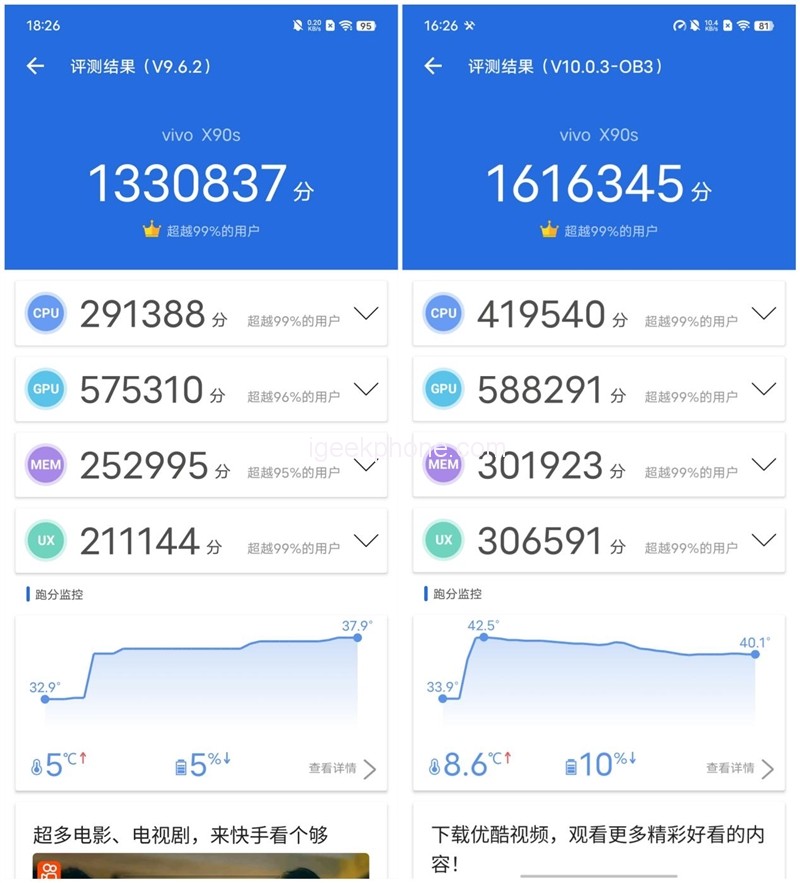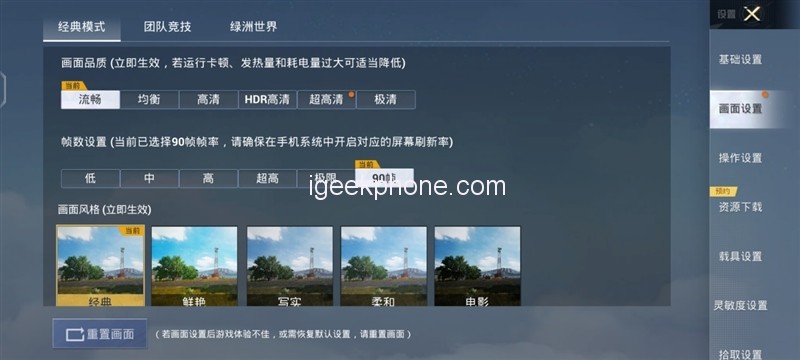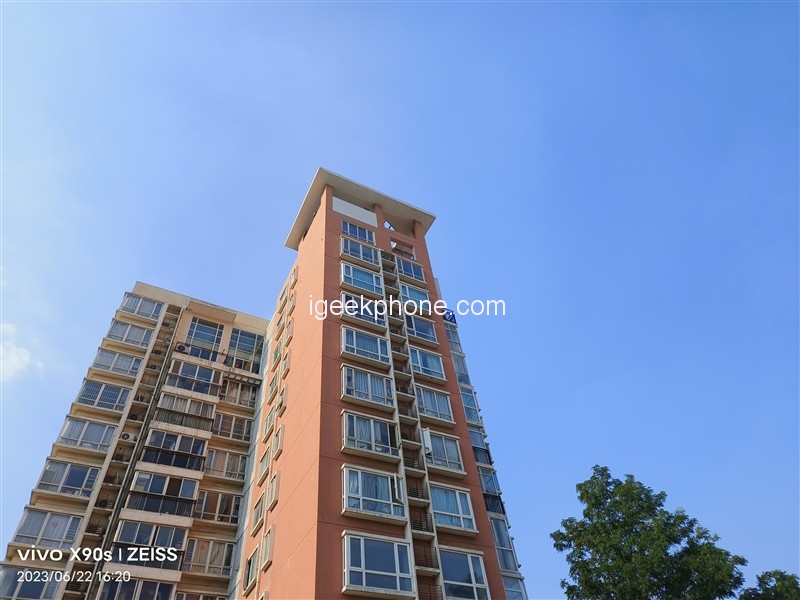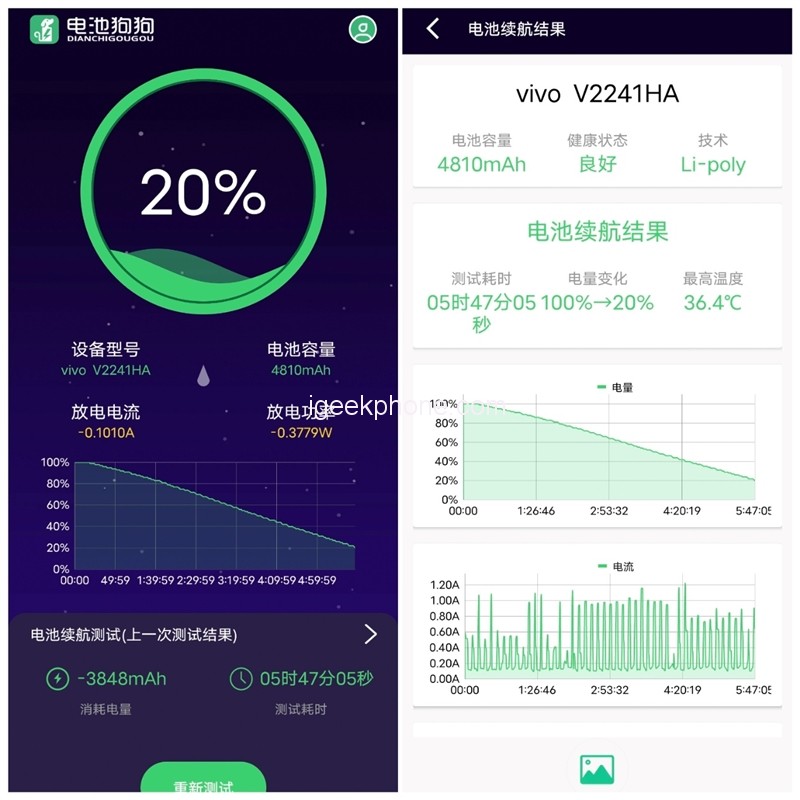Last year, the Dimensity 9200, upgraded to the N4P process technology, was cut off by the vivo X90 series. After half a year of exclusivity, and with excellent hardware and performance optimization, Zeiss exclusive image tuning, and almost all configurations in this price range, the vivo X90 mobile phone has become the best-selling “true fragrance machine” in the history of the X series. At the press conference, vivo released the vivo X90s, the first Dimensity 9200+ chip in this series. It has a breakthrough in performance and brings us a brand new color matching based on Vivo’s understanding of color.
Design & Display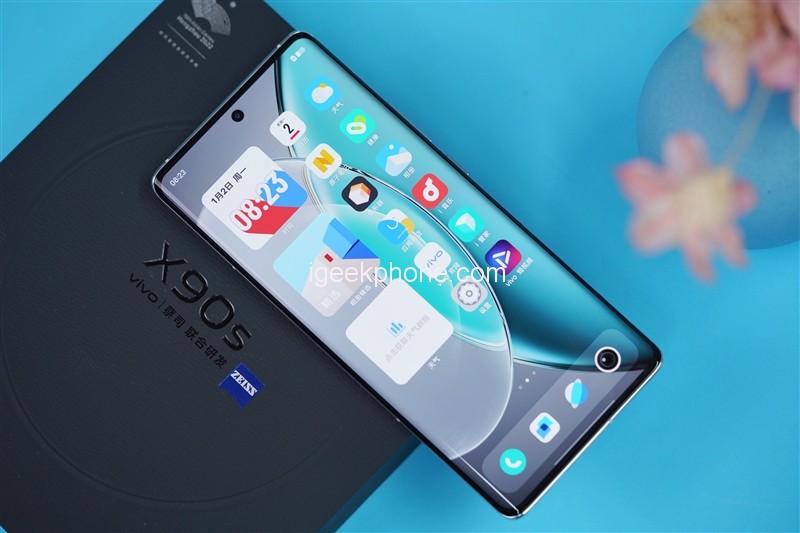
The vivo X90s debuted a brand new green color, exactly the color we got from the phone. The back of the phone uses the cyan color of the water wave, and the surface is attached to a high-gloss glass back panel. When the light is taken in from different angles, it can show various light stripes. However, when you hold the phone, it has a kind of frosted touch. Compared with ordinary glass, it lacks a harsh feel. It is appropriate to describe the phone’s communication as warm as jade.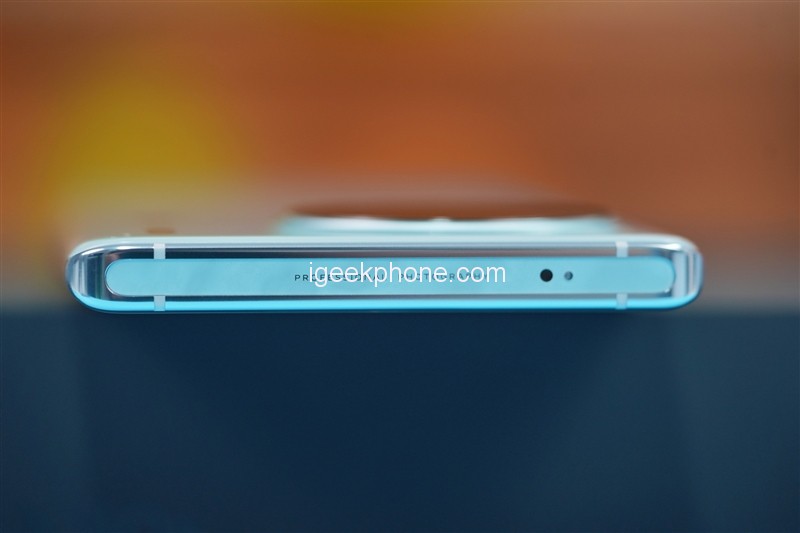
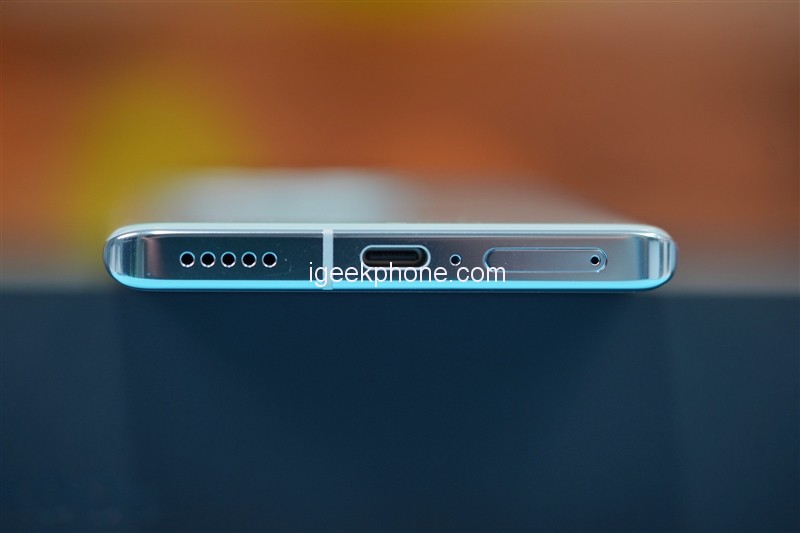
The camera and lower parts are divided according to the golden ratio, reflecting the beauty of mathematics. The waistline in the middle of the back of the vivo X90s mobile phone is designed with ribbons and cloud steps. If you look closely, you can find a rippling water ripple. Through this elegant ripple, vivo shows its respect for nature and life.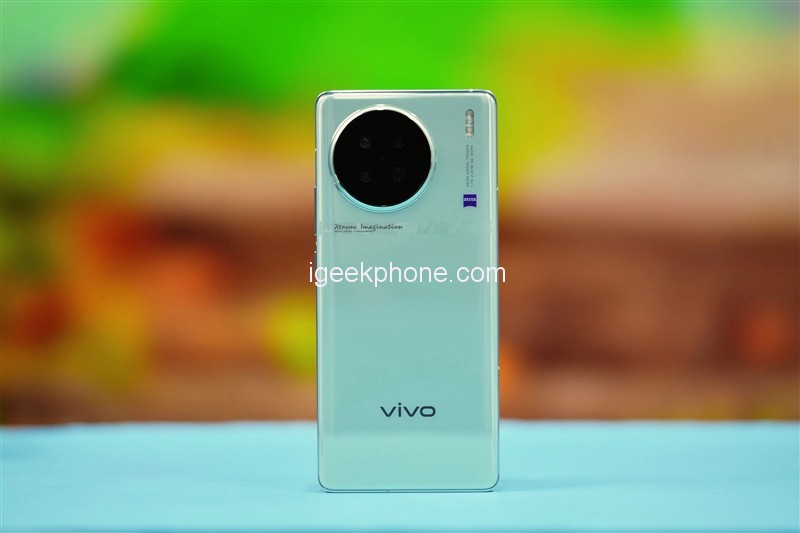
The Xtreme Imagination characters are engraved on the waistline, representing the X series’s extreme imagination and the attitude of constantly breaking the boundaries of creativity.
The camera module of the X90s is located in the upper left corner. It is the same as the previous generation X90. The primary, telephoto, and ultra-wide-angle three cameras have a dToF laser focus sensor. The surface is coated with a T* coating, which can effectively eliminate the glare problem when shooting bright objects.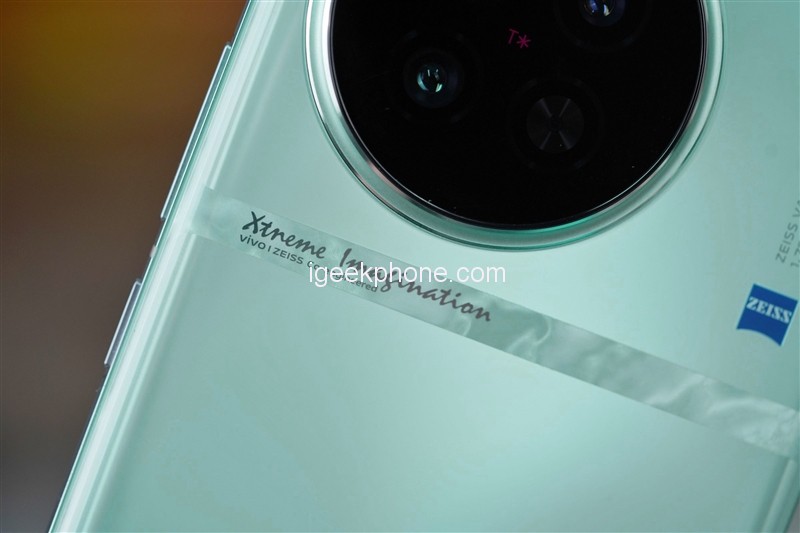
On the right side of the camera module is a dual LED fill light and a color temperature sensor; the bottom right corner is the Zeiss logo. ” professional photography ” is engraved on the top frame of the vivo X90s, and “professional photography” is inscribed, implying that the self-developed V2 imaging chip brings a professional foundation. The right side integrates an infrared sensor and a noise-canceling microphone.
At the bottom of the fuselage is a speaker opening, forming a stereo field with the earpiece speaker on the top. To the right are the Type-C charging headset 2-in-1 interface, microphone, and SIM card slot.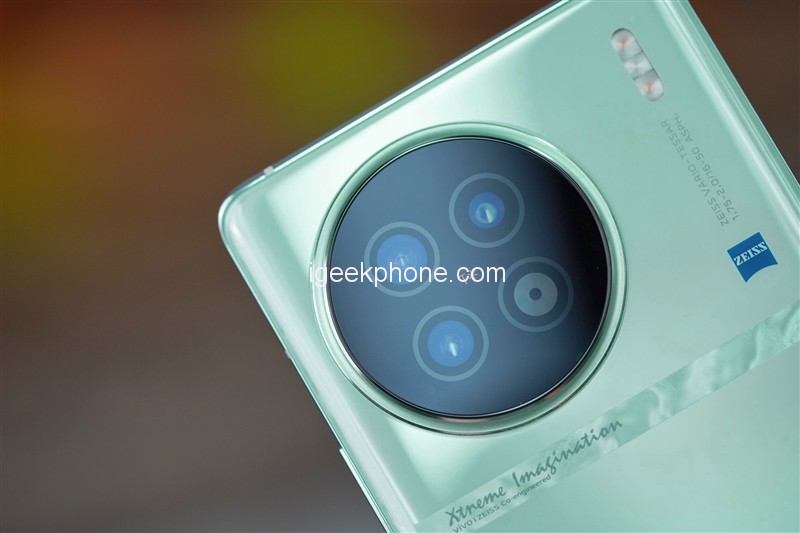
The front of the X90s uses a 6.78-inch BOE Q9 substrate, which is the same screen as the X90. Compared with the Q8 substrate, it has lower power consumption and better display quality. The mobile phone’s screen has a resolution of up to 2800×1260, and the PPI reaches 452, which is super-retina and bids farewell to the title of “blind screen.”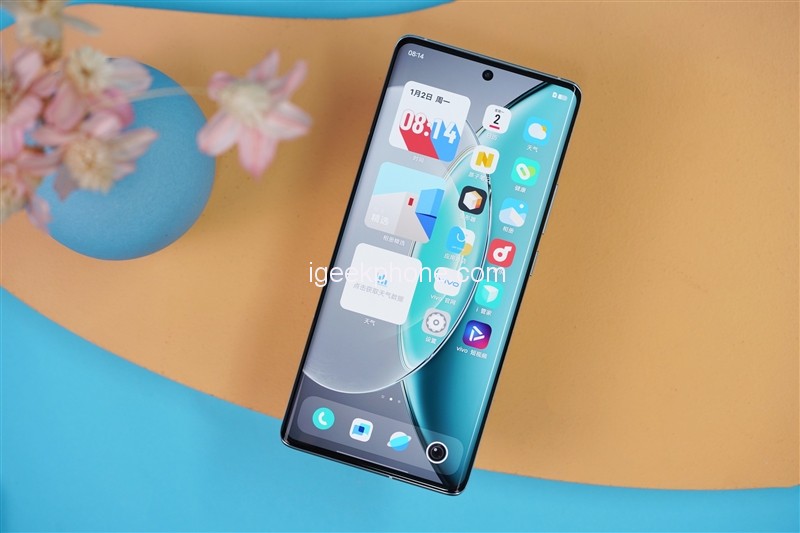
Secondly, the local peak brightness of the X90s screen can reach 1300nit; the static contrast ratio can get 8000000:1; it supports up to 2160Hz high-frequency PWM dimming and has passed the SGS low blue light certification. On this screen, we can see the display quality not lost to Samsung.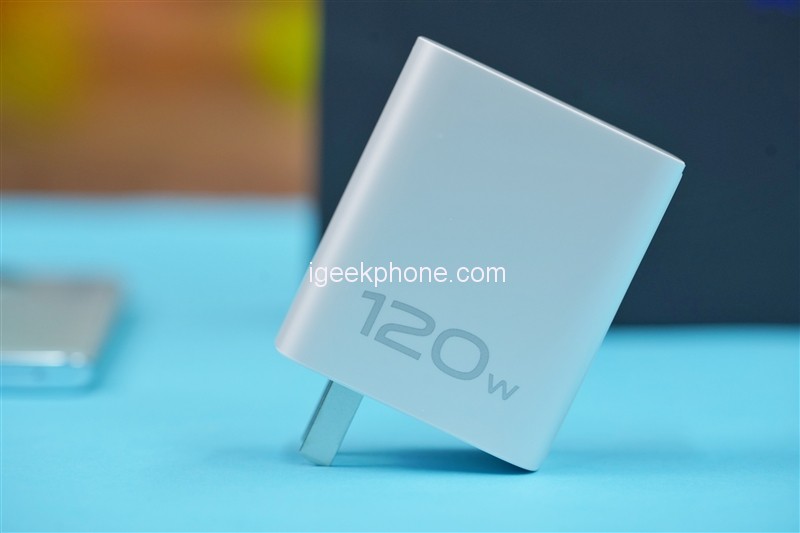
The vivo X90s supports up to 120W dual-core flash charging and comes standard with a 120W fast charging adapter set. Inside the package of the X90s, in addition to the fast charging kit, a transparent silicone phone case, a SIM card pin, and a quick start guide for the phone are also included.
Hardware & Performance
The vivo X90s has MediaTek’s most robust chip, Dimensity 9200+. The core frequency of its GPU has been increased from 981MHz of the previous generation to the highest ever 1.15GHz. Theoretically, there will be a pronounced improvement in graphics rendering capabilities.
The 8GB memory specification is LPDDR5X 7500Mbps, the 12GB memory specification is LPDDR5X 8533Mbps, and the whole system is equipped with UFS 4.0 flash memory as standard. The X90s we have is a 12GB+512GB version, and then we will conduct a set of theoretical benchmark tests on it.
The first is the AnTuTu comprehensive performance test. The total score of the V9 version reached 1.33 million, which is about 20,000 points higher than that of the Snapdragon 8Gen2, and the performance has improved by about 2.3% year-on-year.
Compared with Dimensity 9200, it has a performance improvement of nearly 10.8%. The GPU score once reached 578,000 points, almost 15.6% ahead of Dimensity 9200. This is also the main reason why the overall performance surpasses Snapdragon 8Gen2.
In the AnTuTu V10 comprehensive test, the score reached 1.616 million. In the GeekBench5 test, the single-core score is 1507, and the multi-core score is 4840. Compared with the Dimensity 9200, the single-core performance has increased by 5.5%, and the multi-core performance has increased by 8%.
The GeekBench6 single-core score is 2055 points, and the multi-core score is 5548. Next, we select the regular six 1080P image quality in GFXBench for the GPU single test testing. Among them, the first three items of Aztec ruins OpenGL, Aztec ruins Vulkan, and racing chase ran at frame rates of 154FPS, 156FPS, and 112FPS, respectively.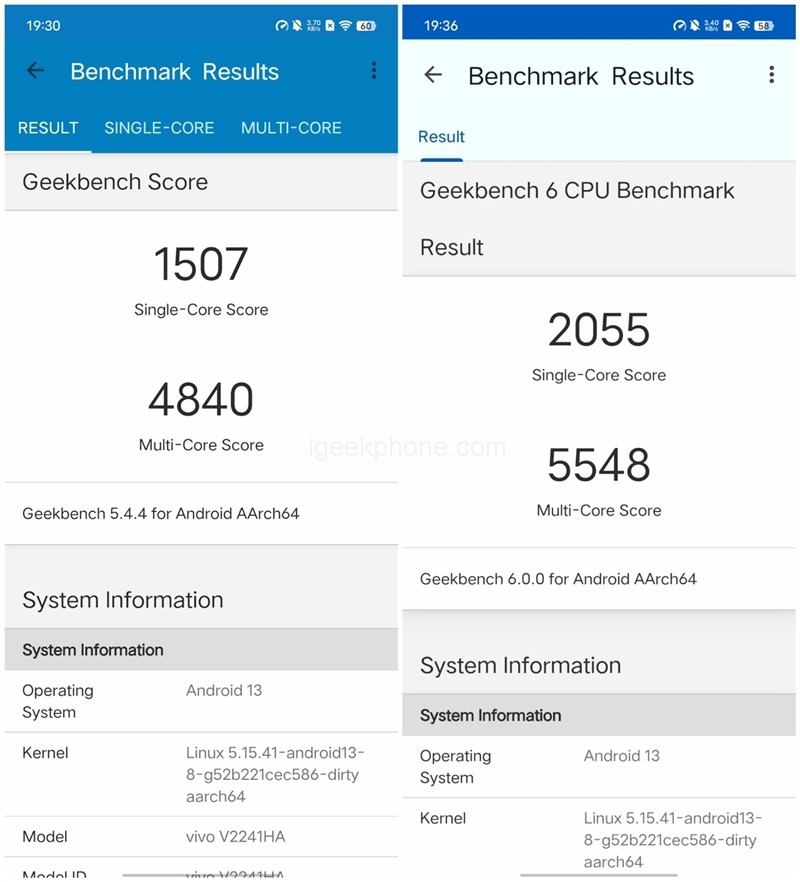
After the first three rounds of tests, the temperature of the mobile phone gradually increased, and the test results of the last three items can reflect the mobile phone’s performance in high-rendering 3D games. Manhattan 3.1, Manhattan, and T-Rex ran 210FPS, 304FPS, and 507FPS, respectively.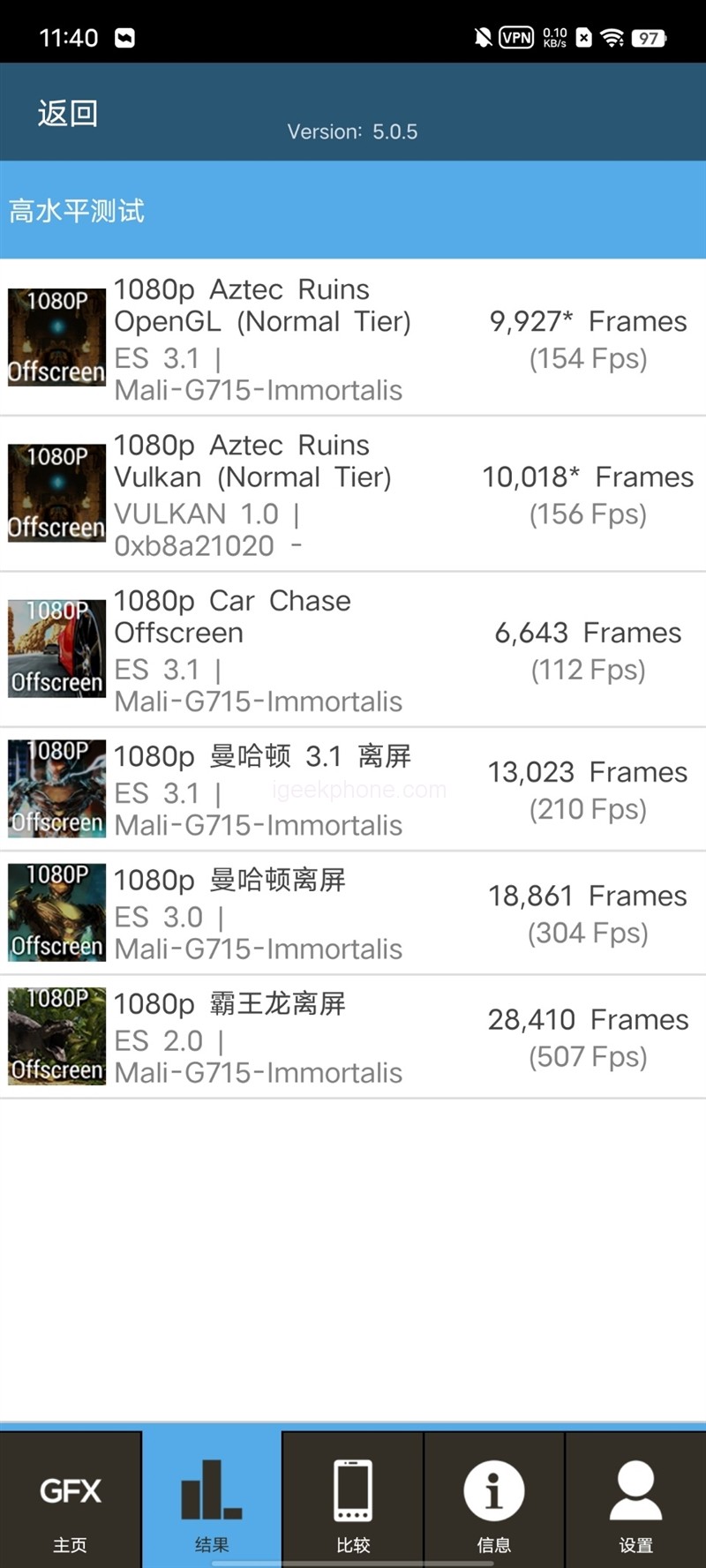
According to the GPU running score, although the central frequency of Dimensity 9200+ has increased by 169MHz, the improvement in graphics processing capability is minimal. In the Androbench test, the sequential reading speed reached 4.14GB/s. This item alone is about 15% ahead of other UFS4.0 storage phones with the exact specification.
This is because the vivo X90s continues to use the MCQ multi-cycle queue of the X90s, expanding the data exchange path between the CPU and UFS from 1 to a maximum of 8, which can exceed the speed advantage of UFS4.0. 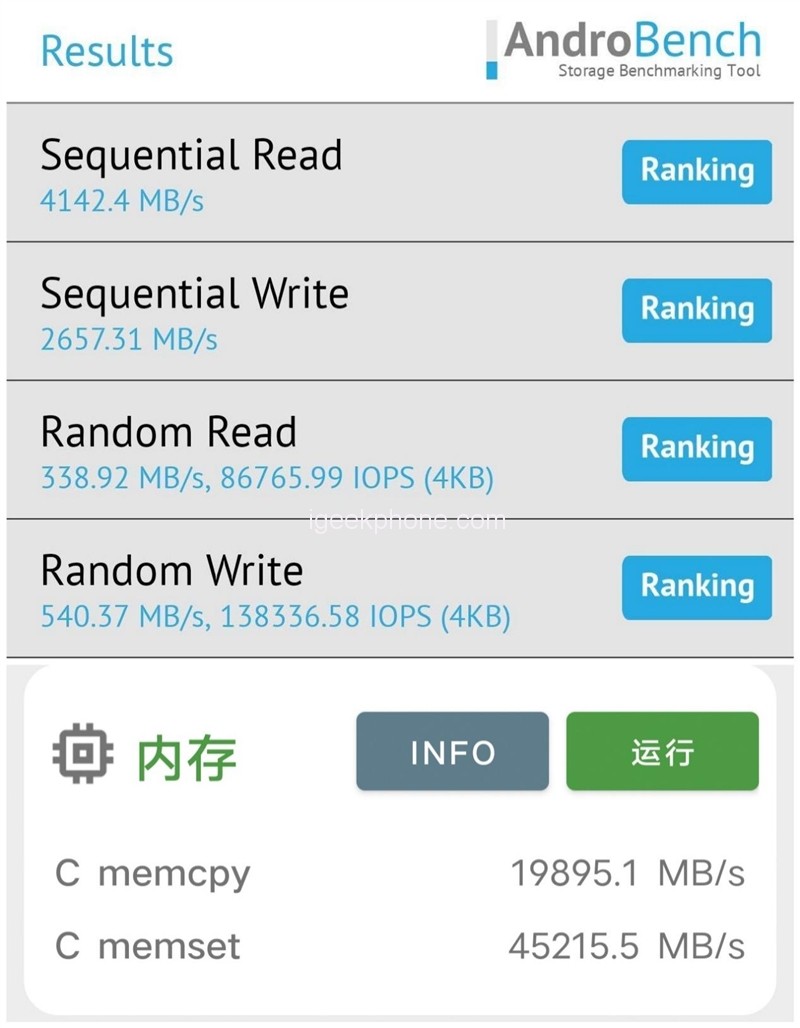
The sequential write speed also reached 2.66GB/s. In random read and write, the read speed reaches 338.92MB/s, and the write speed reaches 540.37MB/s. The memory copy speed reaches 19.9GB/s, and the write speed reaches 45.22GB/s. Looking at these two data running points, the speed standard of LPDDR5X + UFS4.0 has come.
Game testing
In the game testing session, we selected three representative mainstream mobile game masterpieces with low, medium, and high loads, namely “Glory of the King,” “Peace Elite,” and “Yuan Shen.” The frame rate was prioritized for testing in the indoor office environment of 28 degrees Celsius.
1. Glory of Kings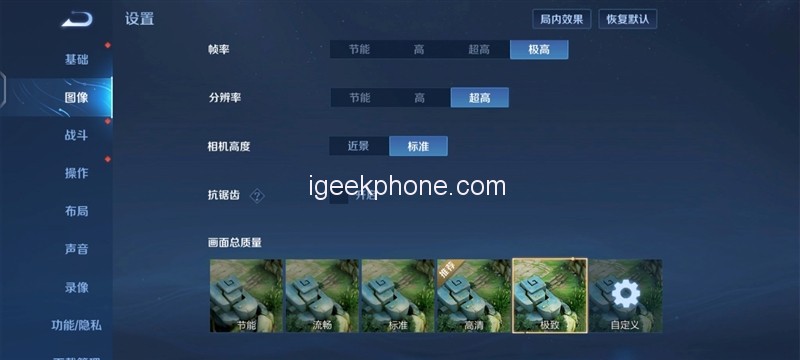
The first is the test of the Honor of Kings mobile game. With the high frame rate and high image quality enabled, the average frame rate of the game was stable at 119.8FPS for nearly 10 minutes, and the frame rate fluctuated by 1.5. During the game, there was almost no trace of stuttering, and the frame rate of the entire match was output in a straight line.
The average power consumption is about 3.4W, the frame energy consumption is 28.4mW, and its energy efficiency ratio reaches 35.2, higher than non-gaming phones equipped with Snapdragon 8Gen2.
In terms of temperature, the front of the fuselage is 41.0 degrees Celsius, and the back of the fuselage is 39.7 degrees Celsius. In this hot summer, it is indeed impossible to resist the heat. Holding the phone with both hands will feel apparent heat, especially the position of the left hand to control the direction, but it didn’t reach the point of being hot.
2. Peace Elite
In the Peace Elite mobile game, when the smooth picture quality + 90 frame mode is turned on, the average frame rate of the game is stable at 89.1 FPS. Occasionally, there will be a small frame drop during the game, but the frame rate fluctuation is not severe and does not affect the overall game experience. The average change has also reached 1.2.
The average power consumption is 3.58W, the frame energy consumption is 40.2mW, and the energy efficiency ratio reaches 24.89, slightly better than the Snapdragon 8Gen2. The highest temperature on the front of the fuselage reached 41.2 degrees Celsius, and the highest on the back earned 38.8 degrees Celsius. Like the Honor of Kings, you will feel heat accumulation in the camera area and the left-hand moving area, but it is not particularly hot and does not affect the smoothness of the game.
3. Original God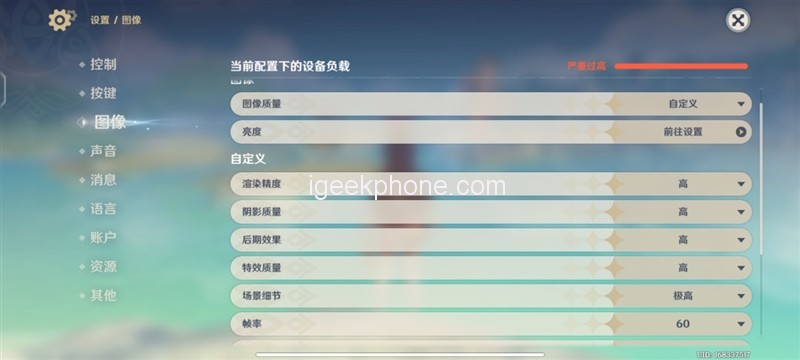
The last is the main event. The Yuanshen mobile game turned on the highest quality +60 frame mode and ran the map while fighting monsters. At this time, we tested the game’s resolution, which reached 810×1800, 1.458 million pixels. During the game, there was no significant frame drop, only slight frame rate fluctuations, which is also a normal phenomenon.
After 10 minutes of testing, the average frame rate of the final game stabilized at 59.3FPS, with an average fluctuation of only 1.7, which can be said to be at the whole frame level.
We also tested the game’s power consumption, with an average of 5.13W and a frame power consumption of 86.6mW, which is not much different from the Snapdragon 8Gen2.
Due to the high power consumption, it also results in higher heat generation during gaming.
After 10 minutes of gaming, the highest temperature on the front of the fuselage reached 43.5 degrees Celsius, and the highest temperature on the back of the phone also reached 41.1 degrees Celsius. There will be an undeniable hot feeling at this time, and you have to change the position of holding the phone to continue the game.
Therefore, Dimensity 9200+ can run stably at high frames facing high-load mobile games, but it brings higher heat, especially in the hot summer. It is fine in an air-conditioned room, but playing such high-load mobile games as little as possible is recommended if you are outdoors under the bright sun. Students with these conditions suggest using a radiator to cool down the phone.
Camera
The vivo X90s uses the same camera module as the X90. The primary camera is a 1/1.49-inch Sony IMX866 sensor with a 16:11 ratio. The actual output area is 1/1.56” through 16:9 cropping. The maximum output is 50 Megapixels, 1.0μm single pixel, supports OIS optical image stabilization, and the equivalent focal length is 23mm.
Both the ultra-wide-angle and telephoto lenses are the ancestral 12-megapixel Sony IMX663. The ultra-wide-angle lens has an equivalent focal length of 16mm and supports a 108° field of view. The telephoto lens has an equal focal length of 47mm, which supports 2x optical zoom compared to the primary camera.
Next, let us follow the lens to experience the actual camera performance of the vivo X90s.
Main camera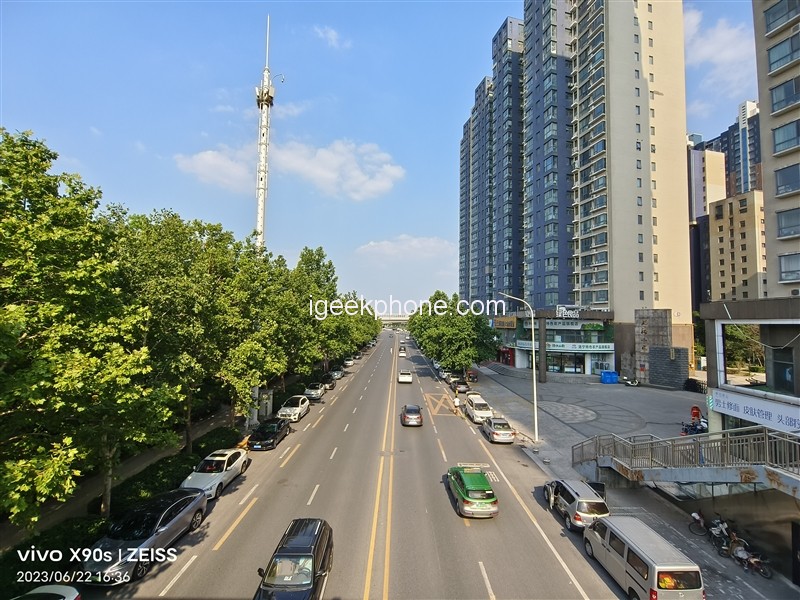
The proofs taken by the primary lens in the daytime scene give people the first impression of cleanliness and the second impression of high saturation, bright colors, and pleasing to the eye.
The first point is why it is clean because the surface of the lens of the vivo X90s is covered with Zeiss T* coating, which can eliminate most of the optical defects. For example, problems such as astigmatism and inaccurate colors will appear in backlit scenes through the gaps in leaves. With T* coating, this kind of problem is well solved.
The second point is high color saturation, also the usual tuning style of vivo images. X90s has three color modes: vivid, textured, and Zeiss natural color.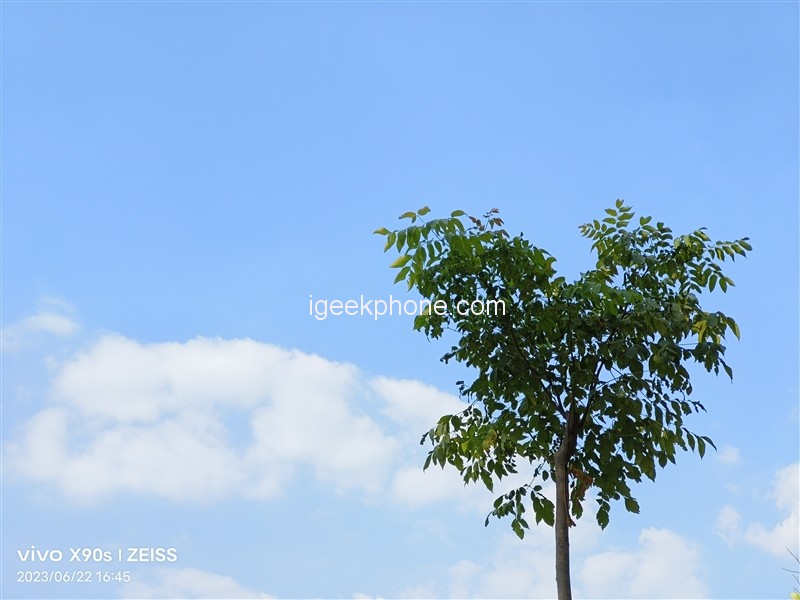
In the night scene, T* coating can eliminate most glare problems. Faced with direct light, it can capture the most realistic side, effectively avoiding glare, ghosting, and other issues and making the picture look clean and bright.
Using the long exposure of the night scene mode, the colors of the exterior and interior of the store are unified, and there will be no discordant situations where the body is too dark and the interior is too bright.
The telephoto lens with 2x optical zoom will also present a higher dynamic range in a highlight ratio environment, and the color of the primary camera does not have a big gap. The lossless zoom makes the picture look very clear without smearing. It can also effectively avoid the surrounding messy objects and take a more pure picture.
The night scene under the telephoto lens still shows the original appearance when facing bright objects. The color of the light board is pure, especially when facing the light beams on the building. There is no light merging between the two pale bars.
Ultra Wide Angle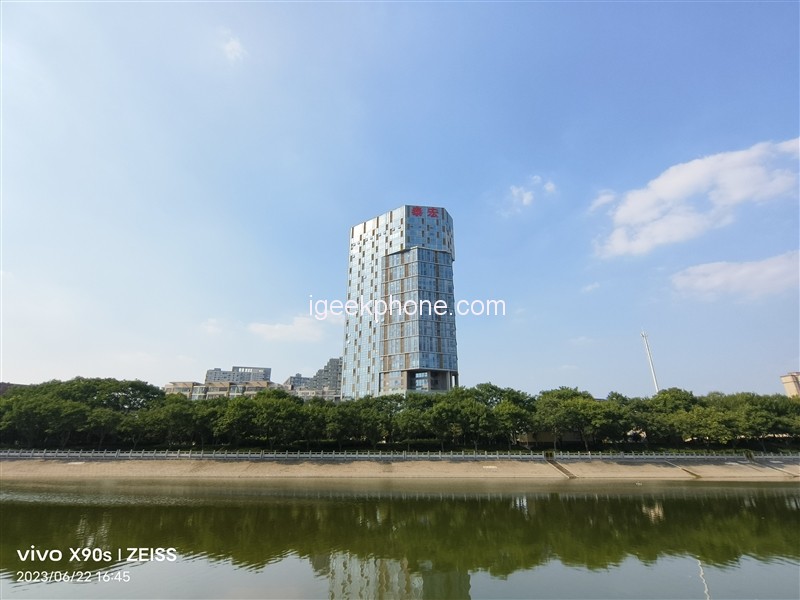
Under the ultra-wide-angle lens, the distortion correction is turned on by default on the vivo X90s, and the captured picture has no distortion at all, but the angle is slightly narrow.
In terms of color style, it maintains a high degree of consistency with the primary camera. The picture is dazzling, and the saturation is high. Especially for buildings with more colors, it is easier to optimize rich colors and look pleasing to the eye. The resolution of 12 Megapixels is better than that of 8 million pixels. The details are also in place, and the text on the building can be seen clearly after zooming in.
The 12-megapixel ultra-wide-angle lens maintains the exact specifications as the telephoto lens, and the imaging quality is also excellent. The color reproduction of the picture is accurate, and the saturation is relatively high. The first impression is that it is beautiful, and there will be no excessive noise in the sky.
Bright colors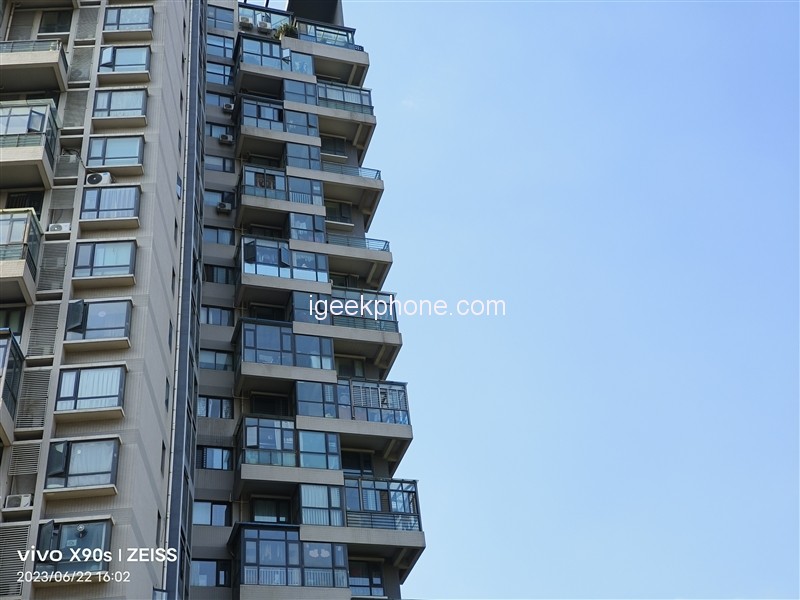
Compared with the X90s regarding video, the most significant upgrade point of the vivo X90s is adding the vivo texture color. We compare three photo styles. The default vivid mode is presented in high-saturation colors, with a bright picture and rich colors. This is also Vivo’s consistent image adjustment style.
Texture color uses more intense colors and strong contrast between light and dark to high-highlight the main body in the proofs, such as leaves, clouds, etc. This mode is more suitable for shooting portraits. Zeiss Natural Color 2.0 shows the most authentic side of life with the colors closest to the actual scene, presenting a natural and soft picture effect.
Battery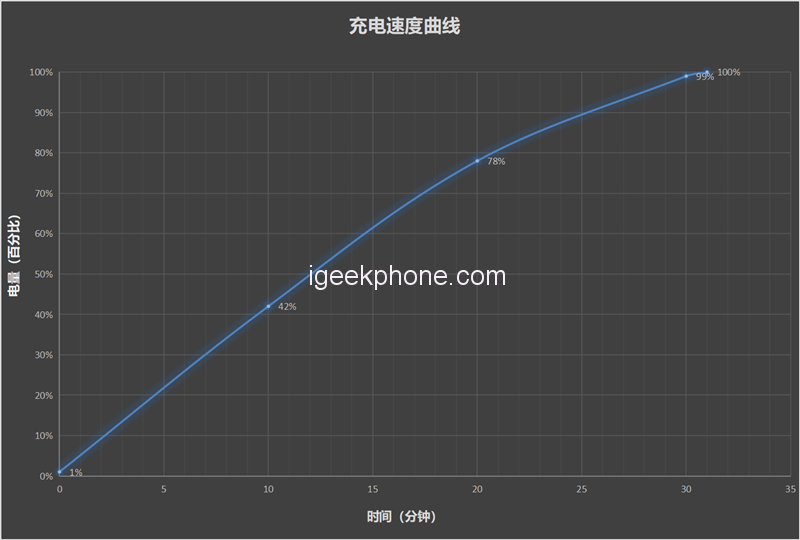
The vivo X90s uses the same 4810mAh dual-cell battery as the X90s supports 120W dual-cell flash charging and uses the third-generation high-viscosity diaphragm battery. After 1460 charge-discharge cycles, the battery capacity is still higher than 80% and can be used for four years without worry.
According to the official introduction, the X90s can reach 50% power after charging for 8 minutes. We also tested the charging and battery life of the mobile phone.
Charging test
After testing, start charging from 1% to 42% in 10 minutes, amount to 78% in 20 minutes, set to 99% in half an hour, and it takes 31 minutes to charge fully.
With this charging speed, it can be fully charged quickly after having a meal with friends and rapidly recharged even if you are in a hurry to go out.
Endurance test
For the battery life, we use a professional battery life test tool – the battery dog produced by Kuai Technology.
In terms of test items, we chose the extreme battery life test. We checked all the test items, including CPU high voltage, CPU multi-threading, AI recognition, picture browsing, video playback, and web browsing, simulating realistic usage scenarios, restoring the actual load to the greatest extent, and infinitely close to the real power consumption.
We set the screen brightness of the vivo X90s to 50% and turned off the automatic brightness; the refresh rate is the default, the resolution is set to 2K, and the test starts from 100% power.
When the remaining power is 20%, the battery dog gives a battery life of 5 hours and 47 minutes. After conversion, the fully charged battery life of the X90s can reach about 7 hours and 13 minutes. If you are not a heavy gamer, this battery life can still meet the user’s intermittent daily use.
Read Also: Xiaomi Civi 3 Review: The Best Selfie Phone of 2023?
Verdict
After a period of experience, the most prominent feeling that the vivo X90s gave me is that it once again redefines the standard version of the flagship.
With the mobile phone’s excellent design and solid quality, the X90s has opened a massive gap with other performance flagships at the same price. Coupled with the superb performance of Dimensity 9200+ and the addition of a Zeiss triple camera and V2 imaging chip, it is a standard version and a ceiling, just like the official propaganda.
Through five significant joint R&D and adjustments, the vivo X90s has a good understanding of the performance control of the Dimensity 9200+ chip. After actual measurement, it can output close to full frames with high image quality in the face of high-load Yuanshen.
This time, the vivo X90s is equipped with LPDDR5X standard memory as standard, which can meet the faster read and write speed of 8533Mbps (8+256GB version is 7500Mbps) while reducing power consumption, so that background application switching can be smooth without lag.
Although the camera specifications of the vivo X90s have not been upgraded compared to the X90s, relying on the new texture and color of vivo, it has created a new photography option for us and can shoot a distinctive classic style.
The combination of countless three cameras and Zeiss lenses will make people’s eyes bright when shooting at night. The anti-glare ability of the three cameras has been dramatically improved. Even in the face of direct light, it can also present pictures with full details.
As an upgraded version of the vivo X90, the X90s is still unmistakable in terms of hardware specifications. A standard mobile phone has found an optimal balance point for us and even provides you with the latest LPDDR5X full-level memory. Whether you are a game enthusiast, a photographer, or want to buy a comprehensive and balanced bucket phone, this newly upgraded vivo X90s can meet your needs.










